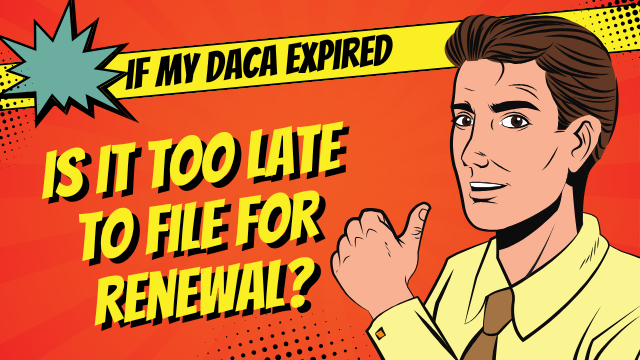By Richard T. Herman, Esq., Herman Legal Group — The Law Firm for Immigrants
Introduction: The Question So Many Immigrant Families Ask
One of the most common and nerve-wracking questions immigrant families face is:
“Can I travel to the United States on a B-2 tourist visa while my Form I-130 (Petition for Alien Relative) is still pending?”
The short answer:
It’s possible—but risky.
You can apply for or enter the U.S. on a B-2 visa while your immigrant petition is pending, but you must convincingly demonstrate nonimmigrant intent—that is, your visit is temporary and you fully intend to return home. The B-2 is a type of visitor’s visa, intended for short-term tourism or visits, not for staying long-term or for marriage-based immigration purposes.
Fast Fact:
Having a pending I-130 petition does not automatically disqualify you from visiting the U.S. as a tourist. But it greatly increases the likelihood of extra scrutiny at your visa interview or at the airport.
Form I-130 is the first step in the marriage based green card process for spouses of U.S. citizens or permanent residents.
This 2025-updated guide by Richard T. Herman, immigration attorney with 30+ years of experience, explains everything you need to know—eligibility, risks, strategies, timing, and best practices—plus how Herman Legal Group (with offices in Cleveland and Columbus, Ohio) can help.

Understanding the Basics: B-2 Visa vs. I-130 Petition
B-2 Tourist Visa: A nonimmigrant visa for individuals visiting temporarily for tourism, family visits, or medical treatment. To qualify, applicants must show they have no intent to immigrate and strong ties to their home country. (DOS — Visitor Visas)
Form I-130** (Petition for Alien Relative):** A family-based immigrant petition filed by a U.S. citizen or lawful permanent resident (LPR) to start the process of sponsoring a family member—such as a spouse, child, or parent—for a green card. The I-130 can be filed for a variety of family members, including spouses, children, and parents. (USCIS — Form I-130)
The conflict arises because:
| Visa Type | Intent Required | Purpose |
|---|---|---|
| B-2 Visitor | Nonimmigrant (temporary) | Short-term visit only |
| I-130 Petition | Immigrant (permanent) | Establishes path to residence |
After I-130 approval, the next step is usually applying for an immigration visa—such as a spouse visa—through consular processing.
Need to Know:
A pending I-130 signals to U.S. officials that you have immigrant intent, which conflicts with the B-2’s nonimmigrant intent requirement.
Eligibility: Can You Apply or Enter on a B-2 While I-130 Is Pending?
Yes—but expect heightened scrutiny.
Consular officers (when issuing visas) and CBP officers (when deciding admission) must believe that you intend to return home after a short stay. If you cannot demonstrate that, your visa may be denied or you may be refused entry. A CBP officer has the authority to deny you entry with a valid B-2 visa. An immigration officer will also review your legal status and immigration history as part of their decision-making process.
Important Note:
The law does not prohibit you from obtaining or using a B-2 visa while your I-130 is pending. However, officers may assume you intend to immigrate—so the burden of proof is on you.
Table: Pros & Cons of Traveling on a B-2 with a Pending I-130
| Advantages | Risks / Disadvantages |
|---|---|
| Possible to visit U.S. family during long I-130 waits | Denial of visa or entry for “immigrant intent” |
| I-130 remains pending even if B-2 is denied | Lengthy secondary inspection at the airport |
| Allows family to stay connected | Misrepresentation can cause lifetime ban (INA §212(a)(6)(C)) |
| Risks involved include denial of entry, visa cancellation, or future immigration complications due to the discretion of immigration authorities. |
Key Legal Risks
- Visa Denial at Embassy — If you disclose your I-130, the officer may deny under INA §214(b) (failure to show nonimmigrant intent).
- Entry Denial at Airport — Even with a valid visa, CBP officers can deny admission if they suspect you’ll overstay. If you have previously overstayed a visa, this will be a significant negative factor in officers’ decisions.
- Misrepresentation Ban — If you conceal your I-130 or falsely state your purpose, you risk a permanent bar for fraud.
- Impact on Future Green Card Process — Honest disclosure doesn’t hurt your I-130 case, but dishonesty will. Misrepresentation or fraud can negatively affect your future eligibility for a green card or other immigration benefits.
The risk of denied admission may vary depending on your relationship to the I-130 petitioner, with immediate relatives often raising more immediate red flags.
Expert Tip:
Always tell the truth about your pending I-130 if asked. A denial for immigrant intent is temporary; a misrepresentation bar can last forever. (USCIS Policy Manual — Fraud and Willful Misrepresentation)
What Evidence Should You Bring
To demonstrate strong ties to your home country, prepare documentation showing compelling reasons to return after your trip:
- Passport and visa
- Return flight itinerary
- Letter from your employer (employment letter) confirming your job and expected return date
- Recent pay stubs and bank statements as financial evidence
- Lease or mortgage documents (including evidence of property ownership)
- Family records (marriage certificate, birth certificates of children)
- School enrollment letters (if applicable)
- Any other supporting documents that clarify your purpose of visit and ties to your home country
Need to Know: Supporting documents are essential for proving your case and can help convince officials of your intent to return home.
Proof of Return Intent:
- Round-trip flight booking
- Employment verification letter
- Lease or mortgage documents abroad
- Family members (children/spouse) staying behind
- Proof of continuing studies or work abroad
- Financial obligations (taxes, loans, business ownership)
Need to Know:
Bring these documents to the airport or visa interview. CBP may ask for proof of your ties before granting entry.
(CBP Traveler Information)
Timing: When Travel Is “Less Risky”
If you filed recently, officers may suspect you intend to stay permanently. The risk lessens as the petition ages and you’ve shown a pattern of travel and return. Keep in mind that the processing time for I-130 petitions can be lengthy, which may influence your travel decisions and risk assessment. Traveling on a B-2 visa shortly after an I-130 has been filed may be viewed more favorably due to longer wait times pending.
| Timing Scenario | Risk Level |
|---|---|
| Before I-130 filing | Low (no immigrant record) |
| Just after filing | High (immigrant intent fresh) |
| Months after filing with history of prior returns | Moderate |
| After I-130 approval but before immigrant visa interview | Very High |
Key Insight:
Once your I-130 is approved and forwarded for consular processing, applying for a B-2 is usually futile—the system now clearly tags you as an intending immigrant.
What Happens at the U.S. Port of Entry
Even with a visa, admission is discretionary. CBP officers, as border protection authorities, are responsible for ensuring that travelers are entering the United States temporarily and not intending to overstay.
The final decision to admit you rests with the CBP officer at the port of entry, regardless of the validity of your B-2 visa.
- Admit you for up to six months;
- Admit you for a shorter period (often 1-2 weeks);
- Deny entry and send you home.
You may be sent to secondary inspection for further questioning if the officer suspects misuse of the B-2 visa.
Prepare for questions such as:
- “Why are you visiting?”
- “Who filed the petition for you?”
- “When will you return?”
These questions are designed to determine whether you are visiting the United States temporarily.
At the port of entry, CBP officers will question you about your intentions and may deny you entry if they suspect you intend to overstay your visa.
Fast Fact:
The CBP officer—not the visa—controls whether you actually enter the U.S. (CBP Inspection Process)
Common Scenarios
Scenario 1: Spouse Visit or Visiting Family While I-130 Pending
A Filipino spouse of a U.S. citizen applies for a B-2 visa to visit her husband and for visiting family. She shows strong home ties: full-time job, home, and close family members (such as children) remaining in the home country, which helps demonstrate her intent to return. She’s issued a visa and visits for two weeks—successfully returns home.
Scenario 2: Staying Too Long or Adjusting Status
A visitor enters on B-2 with I-130 pending, then applies for adjustment of status within 90 days. USCIS may see this as fraudulent entry violating the “90-day rule.” (US DOS Foreign Affairs Manual 9 FAM 302.9-4(B)(3)(g))
Scenario 3: Denied Entry
At JFK, a visitor admits her husband filed an I-130. CBP cancels her visa and returns her home. Her I-130 continues unaffected—but future B-2 travel is now unlikely. Denial of entry may also impact your future plans for reuniting with your spouse or immigrating to the U.S.
Important Note:Denial of entry does not cancel the I-130—but may be recorded in your immigration history.
The Impact of Overstaying a Visa on Approval
Overstaying a tourist visa, visitor visa, or any non immigrant visa can have serious and lasting consequences on your future immigration prospects—including the approval of an immigrant visa or green card. When a foreign national remains in the United States beyond the authorized period, it signals to immigration officers and consular officers that the individual may have immigrant intent and is unwilling to comply with U.S. immigration laws. This can result in denied entry, visa approval refusals, or even long-term bars from reentering the U.S.
How Overstays Affect the Immigrant Visa Process
When you apply for a new visa—whether a visitor’s visa, proper student visa, or immigrant visa—your previous visa history is closely scrutinized. Any record of overstaying a valid visa, especially with a pending I-130 petition, can raise red flags during the immigrant visa process or green card process. Consular officers may question your intent and reliability, making it much harder to secure visa approval for future travel or for your marriage green card process.
Risks for Marriage-Based and Family-Based Applicants
For those pursuing a marriage green card or spousal visa, overstaying a visa can jeopardize the entire process. A citizen spouse or US citizen spouse should be aware that their foreign national partner’s overstay could lead to denied entry or delays in the green card process. Immigration officers may view the overstay as evidence of immigrant intent, which can complicate the approval of both nonimmigrant and immigrant visas.
Visa Waiver Program (VWP) and ESTA Overstays
If you entered the U.S. under the Visa Waiver Program (VWP) using the Electronic System for Travel Authorization (ESTA), overstaying even by a single day can result in severe penalties. Overstayers are typically barred from using the VWP in the future and may face additional restrictions or denials when applying for any type of visa, including an immigrant visa.
How to Mitigate the Risks
Best Practices Before You Travel
- Consult an Attorney: Every case is unique; a lawyer can assess your risk.
- Disclose Truthfully: Never hide the pending petition.
- Prepare Evidence: Bring proof of ties and planned return, including a return ticket.
- Valid Visitor Visa Required: Ensure you have a valid visitor visa (B-2) for entry.
- Plan Short Trips: Short visits look more temporary.
- Avoid Applying for Adjustment of Status in the U.S.: It could appear that you used the B-2 as a backdoor.
- Carry Copy of Your I-130 Receipt Notice (I-797): Shows transparency.
Expert Tip:
Officers appreciate honesty and preparation. If you act like a temporary visitor and have documents to prove it, your chances improve. Remember, your actions during this trip can impact your eligibility for future travel to the U.S.
Geo-Focus: Immigration Law Firms Experienced in B-2 and I-130 Issues
When your future in the U.S. depends on careful travel decisions, legal guidance matters. Consulting an experienced immigration attorney is essential for navigating complex B-2 and I-130 issues, ensuring proper documentation and minimizing risks.
Here are leading immigration law firms familiar with these cases.
| Law Firm | Primary Location | Experience & Focus |
|---|---|---|
| Herman Legal Group | Cleveland & Columbus, Ohio (National) | 30+ years helping families navigate I-130 & B-2 issues; multilingual team; nationally recognized. |
| Murthy Law Firm | Maryland (National) | Strong family- and employment-based immigration focus. |
| Immigration Law New York | New York | Detailed guidance on B-2 travel with I-130 pending. |
Need to Know:
Choosing a firm familiar with local CBP and USCIS offices (Cleveland, Columbus) can make a difference. Local experience helps resolve inspection or admission issues more effectively.
Related Questions
1. Can I apply for a B-2 after my U.S. spouse files the I-130?
Yes, but expect a tougher interview. You must prove temporary intent despite the pending immigrant petition.
2. Can I enter on ESTA while I-130 is pending?
Yes, but the same immigrant-intent issue applies; entry is never guaranteed.
3. Can I adjust status if I enter on B-2 and my I-130 gets approved?
Usually no. B-2 is a nonimmigrant visa; unless you fit an immediate-relative exception and can prove good faith, you must process your immigrant visa abroad. In that case, your case will be handled by the national visa center, and you will attend a consular interview at a U.S. embassy or consulate.
4. Will a B-2 denial hurt my I-130?
No, not by itself. The I-130 remains pending; only misrepresentation would cause harm.
Checklist Before Travel
✅ Valid B-2 visa
✅ Round-trip ticket
✅ Proof of employment and family ties abroad
✅ Evidence of financial support and return plan
✅ Supporting documents to verify your claims and clarify your purpose of visit
✅ Honesty about pending I-130
✅ Attorney consultation before travel
Key Insight:
The stronger your home-country ties and the shorter your intended stay, the better your chances of admission.
Key Takeaways
- A pending I-130 does not bar you from using or applying for a B-2 visa.
- Both U.S. citizens and permanent residents can file an I-130 petition for eligible relatives.
- The main issue is nonimmigrant intent—you must prove you’re visiting temporarily.
- Always disclose the pending I-130; hiding it is fraud.
- Entry is never guaranteed—even with a visa.
- Prepare strong proof of ties abroad and a clear itinerary.
- Avoid adjusting status after entry on B-2.
- Seek legal advice before you travel.
- Consult Herman Legal Group in Cleveland or Columbus, Ohio for personalized help.
About the Author

Richard T. Herman, Esq. is the founder of Herman Legal Group, recognized nationally as The Law Firm for Immigrants.
With over 30 years of experience helping families, professionals, and entrepreneurs navigate complex immigration issues, Richard and his multilingual team provide compassionate, expert representation in all 50 states.








